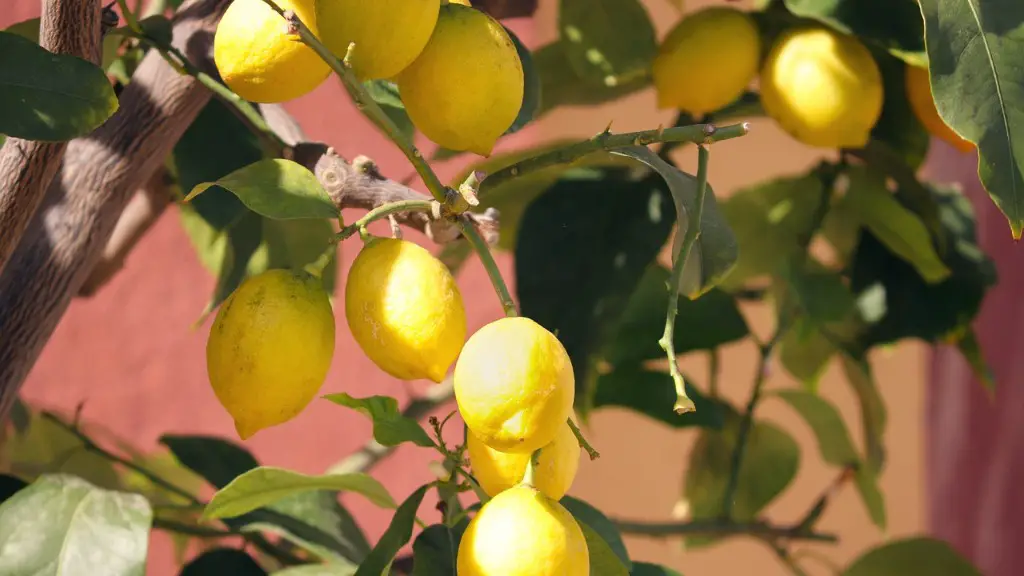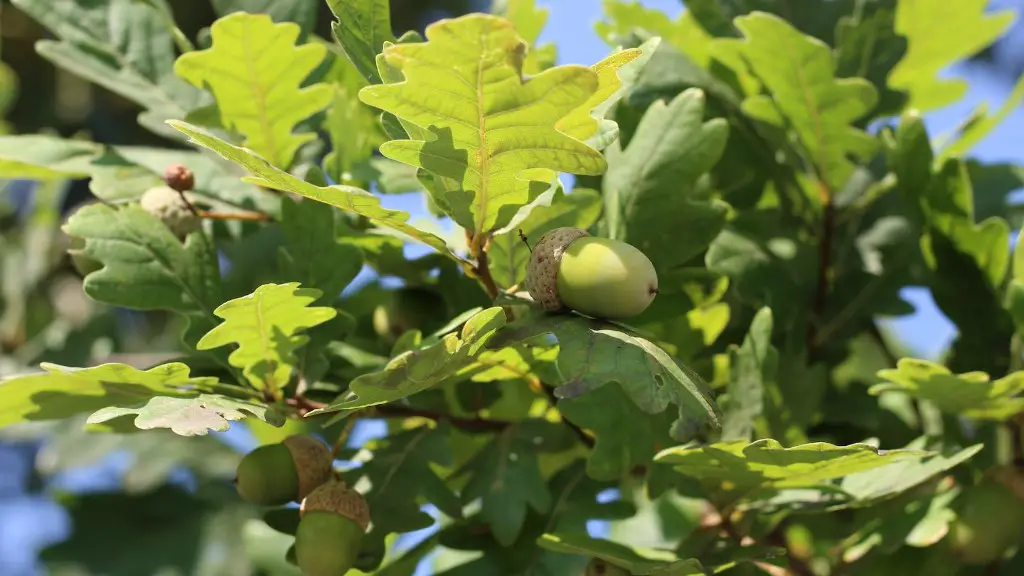It is possible to prune a lemon tree that has fruit on it, but it is important to be aware of the potential consequences of doing so. Pruning a lemon tree can be beneficial to its overall health, as it helps to keep the tree in shape, encourages new growth and improves air circulation. But pruning can also reduce fruit production and even cause leaf drop when done improperly. Therefore, it is best to avoid pruning lemon trees during their fruiting season and to be careful when pruning any other time of the year.
When it comes to pruning lemon trees, a light prune is best. This includes trimming off any dead, dying or diseased branches and any crossing or crowded branches. Pruning at the wrong time of year can leave the tree vulnerable to pests and diseases, so pruning should be limited to light pruning and thinning when done during the fruiting season. Additionally, it is important to avoid pruning too much and to leave some of the new growth, as it can help protect the tree from extreme weather and can help the tree retain heat in cold climates.
When pruning, it is also important to use the right tools. A clean, sharp pair of pruning shears will help to ensure a clean, precise cut, which will help to protect the health of the tree. It is also important to use clean, sterilized tools to avoid transmitting any harmful diseases to the tree. When cutting, it is also important to make sure to not leave any sharp or jagged edges, as these may cause damage to the bark and injury to the tree.
When pruning lemon trees, it is important to be aware of the stages of growth that the tree is in. Pruning during a tree’s flowering period may reduce fruit production. During a tree’s fruiting season, it is important to remember that pruning too much may lead to leaf drop and reduce the number of fruit that can be produced. The best time to prune a lemon tree is during its dormant season, as this will allow for a light prune that will help protect the health of the tree.
In addition to avoiding pruning while the tree is fruiting, it is also important to consider the potential consequences of pruning too much. Pruning too much can reduce the number of fruiting sites, as well as cause defoliation, leading to additional stress on the tree. Additionally, pruning too much can also cause sunburn, a condition which can cause leaves to turn yellow or brown.
In summary, pruning a lemon tree that has fruit on it is possible but should only be done with care. Pruning during the fruiting season should be avoided as it can lead to leaf drop and reduce fruit production. Pruning during the dormant season allows for a light prune, which will help protect the health of the tree. Additionally, it is important to use the right tools and to be aware of the consequences of pruning too much, including the potential for sunburn.
Fertilizing
Fertilizing a lemon tree is also important in keeping it healthy, especially when it is producing fruit. When choosing a fertilizer, it is important to select one that is specifically meant for citrus plants. Fertilizers with high nitrogen levels can increase the plant’s growth rate, but too much nitrogen can also lead to poor fruit quality. It is also important to avoid fertilizing too often, as this can lead to nutrient burn and can have a negative effect on the health of the tree.
When fertilizing a lemon tree, it is important to find a balance between providing the tree with adequate nutrition without overfeeding it. When deciding how much to fertilize, it is also important to consider the type and size of the tree as well as its stage of growth. Additionally, it is essential to read and follow the instructions on the fertilizer label so that the tree receives the correct amount. During its fruiting period, it is best to fertilize a lemon tree using a balanced fertilizer, such as a 10-10-10 formula.
When applying the fertilizer, it is important to spread the fertilizer evenly around the base of the tree. When applying granular fertilizer, it is important to avoid applying it to areas close to the trunk, as this can damage the bark and lead to nutrient deficiency. Additionally, it is also important to water the tree thoroughly after applying the fertilizer to help it absorb the nutrients. Fertilizing should be done during the dormant season, as this helps to protect the health of the tree and helps to promote nutrient availability.
In conclusion, fertilizing is an important part of keeping a lemon tree healthy and producing quality fruit. When fertilizing a lemon tree, it is important to select a fertilizer specifically meant for citrus plants and to follow the instructions on the label. Additionally, it is essential to avoid overfertilizing and to always water the tree after applying fertilizer. Fertilizing should be done during the dormant season in order to ensure the tree has access to the necessary nutrients.
Zones
When selecting a lemon tree to add to a home garden, it is important to be aware of the climate zones that are suitable for growing the tree. Lemon trees are generally considered to thrive in climates with mild winters and warm summers. Lemon trees are generally suited for hardiness zones 8 through 11, which correspond to parts of the United States that have mild climates. In some cases, lemon trees may also be suited to zone 7, depending on the variety.
When selecting a lemon tree, it is also important to consider the size of the tree, as this will determine how much room it will need in the garden. Dwarf varieties of lemon trees tend to be smaller and more compact, making them ideal for containers or small spaces. Some of the most popular dwarf varieties of lemon trees include the Meyer, Eureka and Lisbon varieties. Standard lemon trees are also available, and these generally grow larger than dwarf varieties and will require more space.
In terms of soil and soil pH, lemon trees generally prefer soils that are well-draining with a soil pH between 6.5 and 7.5. Additionally, the soil should be amended with organic matter, such as compost, to help improve aeration and drainage. Once planted, the tree should be watered regularly, but it is important to not overwater it, as this can lead to root damage and root rot.
Finally, when it comes to pruning a lemon tree, it is important to consider the stage of growth and the climate zone. Pruning during the fruiting season should be avoided, as it can reduce fruit production and lead to leaf drop. Pruning during the dormant season is the safest option, as it will allow for light pruning and thinning without causing too much stress to the tree.
Temperature
Temperature is also important when it comes to growing lemon trees. Lemon trees prefer temperatures between 70 and 85°F (21 and 30°C) and dislike temperatures below 50°F (10°C). Additionally, it is important for the tree to experience some temperature variations, as this helps to protect the health of the tree and keeps it strong. If a tree is kept in too cold of an environment, it may be vulnerable to diseases and pests.
During the spring and summer months, the tree should receive adequate sunlight and protection from strong winds. Additionally, when night time temperatures dip below 55°F (13°C), it is important to make sure the tree is well-protected with a frost blanket or a similar type of protection. This will help to reduce the risk of frost damage, as well as other damage caused by extreme weather. Additionally, the soil should be kept moist during the summer months, but it is important to not overwater it, as this can lead to root rot.
In the winter months, it is important to keep the tree away from extreme temperatures and protect it from wind, frost and snow. If possible, some modifications, such as moving the tree to a warmer spot in the garden, may be necessary to protect the tree from extreme temperatures. Additionally, it is also important to care for the tree in the winter by providing it with adequate water, removing diseased or dying branches and pruning lightly.
In conclusion, when growing lemon trees, it is important to be aware of the temperature in the area, as this can have an impact on the health of the tree. Trees should be protected from extreme temperatures, especially in the winter months, and should receive adequate sunlight in the spring and summer. In order to protect the tree from frost damage, it is important to provide it with adequate protection, such as a frost blanket, in cases of extreme temperatures.
Harvesting
Harvesting is also an important part of keeping a lemon tree healthy and productive. Generally, lemon trees will begin to produce fruit after the second year and will usually produce the most fruit in the third year. Lemons are typically ready for harvest when their skin begins to turn yellow and when their juice is tart. The best time to harvest lemons is usually from mid to late summer.
When harvesting, it is important to use clean, sharp tools, such as pruning shears or a fruit picker, to help protect the health of the tree. Additionally, it is also important to pick the lemons when they are ripe, as this will ensure that they have the full flavor and quality. Overripe lemons should also be picked, as they can cause damage to the tree, such as branch breakage.
In addition to harvesting ripe lemons, it is also important to consider the potential consequences of harvesting too much fruit. Over harvesting can leave the tree vulnerable to disease and pests, leading to a decrease in fruit production and quality. Additionally, over harvesting can also cause the tree to become stressed and can lead to excessive leaf drop.
In conclusion, harvesting is an important part of keeping a lemon tree healthy and productive. It is important to use clean and sharp tools when harvesting, as well as to pick the lemons when they are ripe. Additionally, it is important to avoid over harvesting, as this can lead to stress on the tree and reduce its overall productivity.
Protection
Protecting a lemon tree is also important in keeping it healthy and productive. During the winter months, it is important to provide adequate protection from extreme temperatures and provide frost protection when needed. Additionally, it is important to prune lighty during the winter to help prevent cold damage. In the summer months, it is important to provide the tree with adequate water and to provide sun protection if needed.
It is also important to provide the tree with adequate protection from pests and diseases. This can include using an organic pest control spray, such as neem oil, when there is an infestation, as this can help to reduce the number of pests without harming beneficial insects. Additionally, fertilizing during the dormant season can provide some protection from pests and diseases. Additionally, it is also important to remove dead or diseased branches to help reduce the spread of pests and disease.
In summary, protecting a lemon tree is important in keeping it healthy and productive. During the winter months, it is important to provide adequate protection from extreme temperatures and frost protection when needed. In the summer months, it is also important to provide sun protection when necessary and to provide adequate water. Additionally, it is important to provide adequate protection from pests and disease, such as using organic pest control products and fertilizing during the dormant season.




